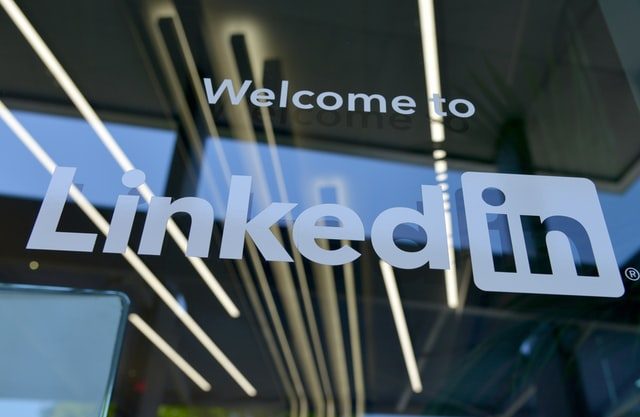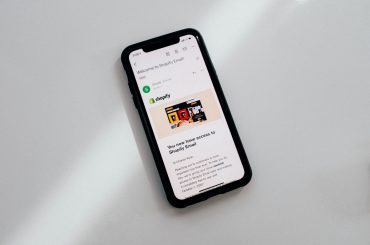Thanks to the events that unfolded due to the COVID19 virus, the last year saw a surge of people flocking to Linkedin. And that made LinkedIn the cool new place to hang out virtually. Everyone wanted to develop their “Personal Brand” and establish “Thought Leadership.”
The result was the dilution of the platform, as manifested by Edelman’s latest study. If you haven’t yet read it, then I strongly urge you to get on with it, because it will tell you what you shouldn’t be doing. And that would make this article much shorter! But for those of you in a hurry, here are a quick 2 minutes rundown:
- Pandemic resulted in too many content creators, which led to a dilution of content quality and poor “Thought leadership.”
- Despite that, Thought leadership is what drives consumer confidence, especially in the B2B space.
- And because there is so much noise in the name of thought leadership, standing out is going to be more complex, and so is earning credibility unless you have quality as your biggest tool.
- You don’t need to be excessively formal to be a thought leader; strike a balance between authority on the subject and being a little human, fun even.
- Now maybe a good time as ever to evaluate your thought leadership strategy (or set one up) because you are playing in a field of increased competition and reduced customer attention span.
And with that premise set, let’s dive into the changes that LinkedIn has made to its content strategy and how that is going to impact most businesses and personal brand experts out there.
If you clicked in here expecting to read about how LinkedIn makes money, their cost structures, their core customer segments, product offerings, etc., let me direct you to an older article by my colleague Gargi on the very same subject. Please read it here.
Elaborating LinkedIn’s content strategy bit by bit
Bye Bye Stories
LinkedIn had introduced the disappearing stories, taking a page of the books of social media giants like Instagram/Snap, etc., in Sept ’20. The aim was to get brands to become a bit more relatable, more fun, and a whole lot more social. It was also hoped that stories, being something every Insta native is familiar with, will get more people to start creating content on the platform (remember that pyramid, where 1% users are creators, 10% are commentators, and 89% are lurkers?).
Tom Pepper, the head of marketing solutions at Linkedin, was pretty confident this was the next big thing for the platform. “We believe Stories can become an integral part of brands’ communication strategies. My advice to any brands looking to experiment with Stories is – just do it! The great thing about Stories is that they don’t have to be slick or overproduced – as long as they are authentic and match your brand and audience.”
Cut to a year later, LinkedIn retired their Stories feature in Sept ’21. So, what happened?
We introduced Stories last year as a fun and casual way to share quick video updates. We’ve learned a ton. Now, we’re taking those learnings to evolve the Stories format into a reimagined video experience across LinkedIn that’s even richer and more conversational.
Liz Li, senior director of product, said in a post.
While that was the official statement, many people believe it may have had to do a lot more with user feedback. Back in Jan ’21, one of the popular search phrases on Google was

Another reason was the infamous “Swipe Up” feature available to anyone with over 5,000 followers. I mean, why is this important? Well, originally, LinkedIn hoped this would be used to direct people to events within LinkedIn. However, people started using the feature to direct their followers to their personal pages outside of LinkedIn. Like to their Youtube/Instagram Handle. Or any other medium where they could easily monetize the eyeballs.
If not Stories, then what?
That Microsoft has always wanted a user-generated Video Content platform is no secret. And when that bid fell through, they were left pretty disappointed. So, it is safe to say they are looking to expand their armory of Video related content. And what better way than to integrate the same with their Social Networking Platform?
But this could all be speculations without any backing. Not if you consider a few of LinkedIn and Microsoft’s acquisitions in September, running up to the retirement of Stories. First, was Microsoft acquired ClipChamp, popular video creation, and editing software. Clipchamp allows anyone to shoot and create video promos easily, a presentation meant for social media. The Microsoft spokesperson said the ClipChamp fits perfectly into their productivity suite.
Still, I think it is also a good way for Microsoft, a Mammoth, to face the vibrant new and popular creator tool, Canva. And there is has been a lot of testimony pouring in for Canva that directly threatened Microsoft’s core suite of products, PPTs. Not to mention all those “death by PPT” memes. How Canva’s strategy is challenging the tech giants
The next acquisition was that by LinkedIn of JumpRope. JumpRope is a how-to video app that helped teachers and tutors build intuitive videos to help their learners. This acquisition sits in very well with some of the popular kinds of content strategies on LinkedIn. How-tos and Listicles. So, what the future looks like is like a mashup of Udemy and Instagram.
Company Pages to take off
The next big thing in its content strategy, and long overdue frankly, is LinkedIn’s renewed focus on Company Pages. Traditionally, company pages, despite that huge follower counts, have seldom had the reach or engagement that personal profiles have had. That is in part related to their push towards getting more active creators and users on their platform. But what is a social networking site if they can’t bridge the brands to their target audience, right?
And so, in Aug ’21, LinkedIn announced a bunch of new features to help promote company pages. First amongst them was the ability for company pages to “Boost” their posts if it sounds a lot like Google Adsense that because, in a way, it is.
The next was LinkedIn Events. Events on company pages had 500 credits. Credits are your ability to invite people to attend your event, and once someone accepts that credit, the company can extend that invitation to another person. Hence, Credit! Whereas on a personal profile, you get about less than half the number of credits. You also have credits for inviting people to follow your page, a thankfully unavailable feature to personal profiles.
And it was a double bonanza if the event was hosted over LinkedIn, using the LinkedIn Live feature. Now LinkedIn Live is not available to just about everybody. For a personal account, you need at least 1,000 followers to be approved for the same. Whereas for company pages, that threshold is set at 150! Besides, with all their recent video platform acquisitions, I wouldn’t be surprised if company pages could go live natively on the platform, rather than having to use third-party streaming tools.
Now, because this is a strategy article, I thought it best to end this section with a good content strategy for company pages on LinkedIn. This is called the 3-2-1 and was first designed by Company Pages expert Michelle Raymonds.
3 pieces of content to establish your thought leadership in your industry. This has to be contextual, informative, research-driven, and relevant to the current times.
2 content pieces that show your appreciation for your employees. These can be shout outposts, an accomplishment of your employee that you wish to celebrate, no matter how small. Here, the aim is to turn the spotlight on your warriors behind the scene and help them grow while showing your humane side.
1 content that is related to the product or service you offer. This is where you can have your sales pitch or call to action!
You’ll see how Michelle has placed sales at the end. That is because no one wants to feel like they’re being pitched to. People want to believe that they bought into your idea. That supports your cause without you having to pitch it to them constantly. I do hope this strategy helps you build out your content calendar.
Newsletters for All?
If anything, I think LinkedIn themselves do not take the study seriously. They sponsored Edelman and his team to conduct. Why do I say that? Well, as of 4th Nov ’21, LinkedIn opened up the Newsletter Product to everyone on their platform as part of their content strategy. Well, almost everyone.
The eligibility criteria (really should be a welcome all criteria) is
- At least 150 first degree connections
- Should’ve posted at least 1 article in the last few months
- Should have creator mode turned on
The result? Every other person now has their newsletter, yes, of course. But it’s the content fatigue people are facing due to the unprecedented number of subscribe requests that are flooding their Network tab!
And contrary to popular belief, having a newsletter isn’t synonymous with being a thought leader. If you aren’t going to add value, you will add to the noise, which is eventually what will happen with Newsletters.
So while it is great that you have access to newsletters, do you have a strategy in place for your newsletter? Here is a handy checklist I created when I set off with my newsletter three months back (P.S.: I had access to the newsletter for over a year now, but it took me a lot of introspection on these points before I set off inviting folks to subscribe to it.
Because a newsletter is a promise to deliver something of value periodically)
- Do you know what you are going to talk about? And is this a micro-niche where you can shine?
- How many others are already talking about this particular niche of yours on the platform? If more than a handful isn’t your micro-niche, so swim out of that red ocean now!
- Do you have a catchy, memorable name for your newsletter already? It shouldn’t be too lengthy, and it shouldn’t be too pedestrian. Both are prone to be forgotten the minute you’ve turned your back.
- Are you reasonably confident you can stick to the timelines you are setting for yourself? Do you have other commitments that may interfere with your ability to create quality content for your newsletter?
- Do you have sufficient access to research materials and data points for your micro-niche newsletter?
- Do you have the capabilities to pull it all off, or would you need a support system? Someone to proofread your articles, maybe? Someone, to help you structure it?
And, since this week, I have noticed that the open rates of my newsletter have dropped considerably. Understandably so. That means you may not get the reach or the appreciation for your newsletter. So are you ready for the potential disappointment?
A problem with your reach?
And that brings us to another set of problems: the declining reach content creators of old are complaining about. Here are a few snippets of people with over a hundred thousand followers on the platform and barely even a 1% of the engagement.

Then we have Jon Tesser’s open proclamation and frustration over the reach on this platform.
There are many others, but I didn’t have permission to re-publish their work.
But, let’s try deconstructing why this is happening? A popular theory is that LinkedIn, as part of its new content strategy, is promoting new content creators. So if you haven’t ever posted on LinkedIn, now is the time because your first ever post may cross that envious 1,000 likes benchmark.
But, there is another reason. LinkedIn has always helped people find their tribe. So the first time you put out a post, it has no way of knowing to whom this would resonate. Hence the algorithm tries to amplify the reach of your post to your entire network of connections and followers and tries to train the algorithm based on the profiles that liked or commented on it.
And because most often, the first post that most people put out is either their corporate struggle, resulting in a successful outcome, most in their network are likely to want to help them celebrate that win! Resulting in increased engagement.
Over time, as a person tries to drill down and post only content on their micro-niche, fewer and fewer networks interact on that. With the result that the reach and engagement consistently keep dropping over time!
And all of this ties back to Edelman’s study in a way too. As people realize that deeply insightful topics do not generate similar engagement, they revert to superfluous but engaging superficial content. Or, they resort to cringe-worthy growth hacks like the ones below:

So the real question is, do you want to be that one among the million other drones with many eyeballs? Or the one person people remember when they think of your micro-niche?
Focus on Creator Economy
I let that last question hang in there because it’s essential for what is to come next.
It is no secret that the next big boom is going to be from the creator economy. Some estimates peg it at $5B by the end of this year.
Sam Lessin, a General Partner at Slow Venture, even detailed out how their fund invests in people, not the venture. This article details how they fund creators to get better, what the deal structure looks like, the creative liberties creators have, and how the fund reduces the risk to creators by taking it on their plate. And they aren’t alone. We have seen several platforms create an environment where their top creators can produce more and better content.
Not one to be left behind, Linkedin’s Editor, Dan Roth, too announced the launch of their creator program. And in Sept ’21, they launched the creator accelerator program in the U.S. with a total fund of $25M. The entries were open till Oct ’21. And they will be announcing their first cohort of 100 creators this month. The creators will get beta access to many of the new content tools LinkedIn has in the pipeline.
These creators will learn directly from the editorial board how to take their LinkedIn game to the next level in the next three months. This, they plan to do with the help of Creator Managers. And yes, the company has hired several of them from various other social media platforms.
While they haven’t yet announced their final list, here are some of what I think will be the criteria, based on how they selected me for Top Voices.
- If your posts are self-promotional or intended to get eyeballs without much value-added, you probably won’t make it.
- If your posts are the type that shows your expertise in your micro-niche, you may still be in the race.
- If your posts reflect the happenings in your industry, in a contemporary setting, and not a look back at whats happened, bonus points.
- If you’re able to get more conversations going, bonus points again.
- If those conversations result in your finding and forming your tribe even better
- And best of all, if contacts from those tribes help you to achieve your professional goals.
All said I guess the Edelman study did have its required effect. And maybe this is their way to promote quality content from every niche!
-AMAZONPOLLY-ONLYWORDS-START-
Also, check out our most loved stories below

Why did Michelin, a tire company, decide to rate restaurants?
Is ‘Michelin Star’ by the same Michelin that sells tires, yes, it is! But Why? How a tire company evaluations became most coveted in the culinary industry?

Starbucks prices products on value not cost. Why?
In value-based pricing, products are priced based on the perceived value instead of cost. Starbucks has mastered the art of value-based pricing. How?

Nike doesn’t sell shoes. It sells an idea!!
Nike has built one of the most powerful brands in the world through its benefit-based marketing strategy. What is this strategy and how Nike has used it?

Domino’s is not a pizza delivery company. What is it then?
How one step towards digital transformation completely changed the brand perception of Domino’s from a pizza delivery company to a technology company?

Why does Tesla’s Zero Dollar Budget Marketing Strategy work?
Touted as the most valuable car company in the world, Tesla firmly sticks to its zero-dollar marketing. Then what is Tesla’s marketing strategy?

Yahoo! The story of strategic mistakes
Yahoo’s story or case study is full of strategic mistakes. From wrong to missed acquisitions, wrong CEOs, the list is endless. No matter how great the product was!!

Apple – A Unique Take on Social Media Strategy
Apple’s social media strategy is extremely unusual. In this piece, we connect Apple’s unique and successful take on social media to its core values.
-AMAZONPOLLY-ONLYWORDS-END-















